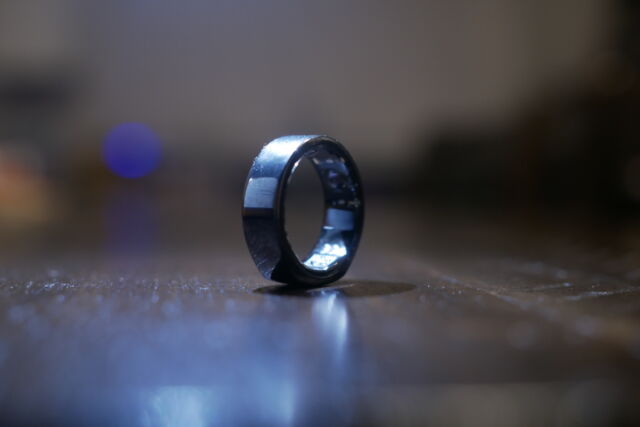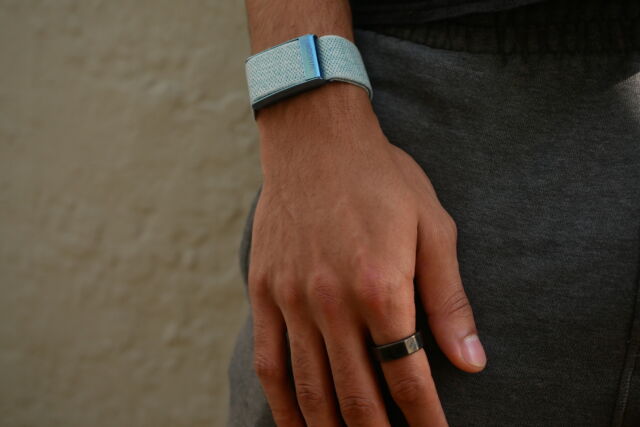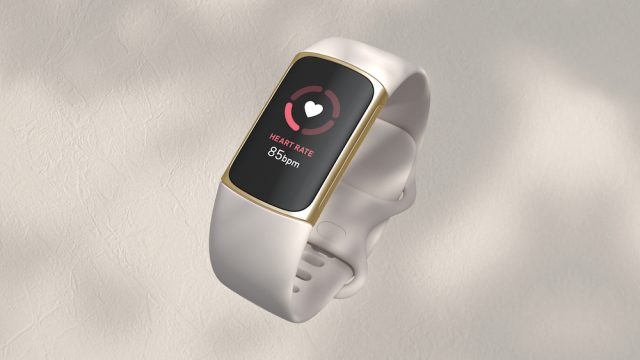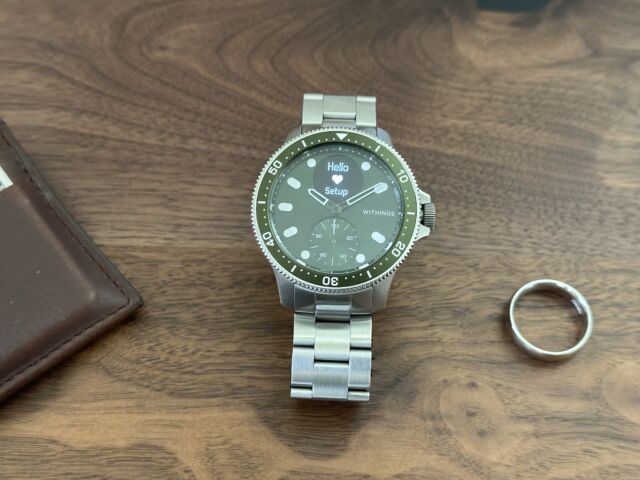Chuong Nguyen
Everyday carry enthusiasts typically face a conundrum when it comes to choosing between a smartwatch with all the benefits of modern wrist-worn tech or giving up tracking their health metrics in exchange for classic, mechanical watches. There are a few people who wear a regular timepiece on one wrist and a smartwatch on the other, but those drawbacks are obvious.
Fortunately, there’s a growing selection of wearables that offer the tracking power of an Apple watch without taking up space on your wrist. These allow you to wear a mechanical watch for timekeeping while a health-tracking device feeds data to your phone. If you care about sleep metrics, step counts, heart and respiration rates, blood oxygen levels and still want to wear your mechanical watch, we’ve found three great wearable solutions for you.
Ars Technica may earn compensation for sales from links on this post through affiliate programs.
Oura ring

Corey Gaskin
The Oura Ring is one of my favorite health trackers on the market. It’s a ring with a simple design that makes it feel less constraining than a bulkier smartwatch, and its jewelry-like finish gives it a less utilitarian feel than other wearables. Essentially, it feels more like an unobtrusive luxurious splurge than a technological tool.
Unlike traditional smartwatches or fitness watches like the Apple Watch or Garmin wearables, the Oura Ring isn’t ideal for serious athletes who need their workout metrics updated and displayed in real time—the Oura Ring lacks a display, and there’s no GPS. Rather, the embedded sensors in this finger-worn wearable are designed to track basic metrics, including heart rate, respiration rate, and body temperature. The ring will be able to give you an idea of how many calories you’ve burned throughout the day, track your steps, and monitor your quality of sleep.
All the metrics tracked by Oura Ring should sound familiar if you’ve worn a smartwatch. And smartwatch owners can pair the Oura Ring to their watch and integrate all the data collected between their devices with apps like Apple’s Health on the iPhone or Google Fit on Android. This will give you a more complete picture of your health and fitness. But since we’re after adding some health metrics to a classic timepiece, we won’t dive into that process here.
The Oura fits like any other ring, and sizing is important. If you don’t know your ring size, you can get it from any jeweler. Or you can order Oura’s sizing kit for $10.
When worn with a regular timepiece—I opted for Shinola’s The Bronze Monster, which is my current everyday carry favorite for its more unique and vintage aesthetic with a bronze case, American-assembled heritage with Swiss automatic movement inside, and the familiar dive watch-inspired design—the Oura Ring delivers a fairly accurate picture of my body’s activity. It provided me with my sleep data, my heart rate, and how long it will take for me to recover after a workout with a body readiness score. If you’re not training for a race and are just after a tool to help you understand your body better, the Oura Ring gives you plenty of succinct and digestible insights, according to our review, along with trend analysis for longer-term data collection. The biggest downside with the platform is that all the valuable data is paywalled behind a $6 per month subscription. That’s in addition to the ring’s $300 upfront hardware cost.
The good
- Sleek, minimalist design that’s unobtrusive on the body
- Battery life lasts for four days or longer before requiring a charge
- No distracting screen
The bad
- Not designed for serious athletes who need real-time data to be displayed
- Important health data is paywalled behind a subscription
- Requires accurate sizing
Whoop

Corey Gaskin
Whoop is a compact health-tracking device that packs in plenty of sensors to help you track and make sense of your body’s stats and metrics. Despite being 33 percent smaller than its predecessor, the Whoop 4.0 still manages to pack in four photodiodes, five LEDs, and a temperature sensor in a pod that can snap into a wrist-worn fabric bracelet or discretely tucked into athletic clothing, making it an ideal everyday companion.
If you want to wear a watch, the Whoop bracelet can be worn on the opposite arm as your timepiece or layered on the same wrist like a traditional bracelet. It’s far less stylish than some of the latest options from our friends at GQ, but the utilitarian sports fabric of the Whoop makes it resistant to sweat, skin oils, and your favorite lotions and potions. This makes it a durable accessory for fitness tracking.
Designed for more serious athletes, the Whoop doesn’t come with some of the health-tracking features that are found even on the cheapest smartwatches, including steps taken, stairs climbed, or how long you’ve been active. And lacking a screen for notifications and to display the time as well as a built-in GPS sensor to track your runs, you’ll definitely need to rely more on your phone for the basics. Whoop’s primary aim is to monitor your cardiovascular strain, your body’s recovery, and your sleep. The tracker will tell you how much you should work out based on the insights it has gathered. While the app itself provides plenty of graphs and charts, the data presented isn’t as easy to decipher, which is a downside of having too much information at your disposal.
Like Oura, Whoop’s pricey subscription fee may be a deterrent to some. More serious fitness fans may want to consider getting a sports watch, like Garmin’s Fenix or Epix series, for similar data analytics, while casual workout enthusiasts may get better value sticking to the Apple Watch or offerings from Google and Samsung.
The good
- Comfortable to wear with different clothing options
- Plenty of charts and graphs to help you understand your data
The bad
- Charging system is awkward
- Doesn’t track basic fitness metrics, like steps
- Subscription adds to costs
Garmin Vivosmart 4, Vivosmart 5 and Fitbit Charge 5

Fitbit
Garmin and Fitbit are among the top manufacturers of fitness watches, and the Fitbit Charge 5 along with Garmin’s Vivosmart 4 and 5, extend that pedigree into a smaller bracelet design that’s less intrusive. If you don’t mind having a small, elongated rectangular screen on your wrist, these devices could be a great companion to your mechanical watch on your wrist.
With plenty of sensors to track your health and fitness, these fitness-tracking bracelets have small OLED displays to give you pertinent data. The Vivosmart 5, for example, can still monitor your heart rate, blood oxygen saturation, stress, and breathing rates and track 14 different types of activities, including high-intensity interval training, yoga, strength training, and more. A separate companion app helps monitor menstruation cycle tracking for women. Like the other compact trackers on our list, Garmin eschews a GPS sensor, so you’ll need to bring your phone on runs and bike rides if you want more detailed location analytics. And like the Oura and the Whoop, Garmin has a Body Battery metric that monitors your exertion and recovery. Unlike its competitors, Garmin did not paywall this feature.
Fitbit’s Charge 5 one-ups the Garmin with a few additional sensors, including an electrocardiogram sensor, useful for those who want to see if they have atrial fibrillation, as well as an electrodermal activity sensor to measure stress. A more durable stainless steel shell gives it an elevated aesthetic, though you should be mindful of its wrist position if you’re looking to pair this with a mechanical watch to avoid scratching your heirloom horological piece. As a bracelet, you can choose from various strap options, including leather, nylon, and silicone bands.
Like the Vivosmart, there’s a crisp OLED activity sensor on the Charge 5. Fitbit also includes workout videos from its content partners inside the company’s smartphone companion app to get you started. Unlike Garmin, however, Fitbit’s more premium feature, including its workout app and Daily Readiness score, is paywalled behind the Fitbit Premium subscription.
The good
- Compact screen displays helpful information without being distracting
- Slim form factor makes these trackers a versatile bracelet
- Can track plenty of metrics and provide detailed body readiness report
The bad
- Fitbit’s premium features are locked behind a paywall
- No GPS
Withings Scanwatch

Chuong Nguyen
Aside from the polish that a traditional watch brings to elevate your outfit for important occasions, the biggest advantage that a mechanical watch over a smartwatch is that the former doesn’t require daily or near-daily recharging. My Apple Watch Series 8 Ultra, for example, can’t last for three full days with notifications pinging, the always-on display active, and sleep tracking enabled. But if you have to have all the sensors from the Apple Watch, maintain good battery life, and get the aesthetic of a traditional timepiece, nothing beats Withings’ Scanwatch.
The Scanwatch, which is available in various styles with different straps and metal bracelet options, blends the modern with the classic. With analog hands, a dive watch style with a rotating bezel, and a crown, the Scanwatch doesn’t look out of place at more formal events. A small OLED window at the top brings in the digital marvels of a modern smartwatch, including displaying notifications from a smartphone, tracking your steps and flights of stairs you’ve climbed, and even allowing you to take an ECG reading.
Withings Scanwatch Series
The Scanwatch is a smartwatch that’s disguised as a traditional watch, and it’s a great companion piece for busy executives who want a dressier wrist accessory without sacrificing the health metrics of an Apple Watch, Galaxy Watch, or Pixel Watch. Like these smartwatches, the Scanwatch also comes with heart rate and blood oxygen sensors, and the watch can also record your sleep. You won’t get the same detailed body readiness reports from competing fitness-oriented trackers and sports watches, but you’ll be able to monitor at least how much you’ve been moving around during the day. The Scanwatch Horizon can even track a few basic workouts, like running, walking, swimming, and cycling. Lacking a built-in GPS, you’ll need to rely on your phone if you want to map and track your runs and bike rides.
The good
- Classic dive watch aesthetic with analog hands
- Watch portion can last up to 30 days on a single charge
- Health tracking and smartwatch features built into digital display
- Durable construction feels like a real watch
The bad
- Proprietary charger
- Smart display is small and cannot display a lot of glanceable information
- Fitness tracking is limited to a few specific exercises

